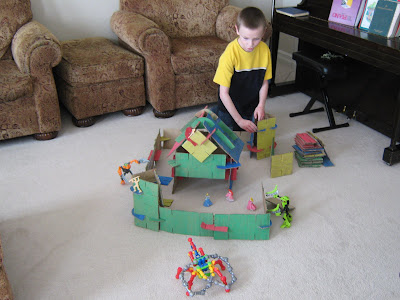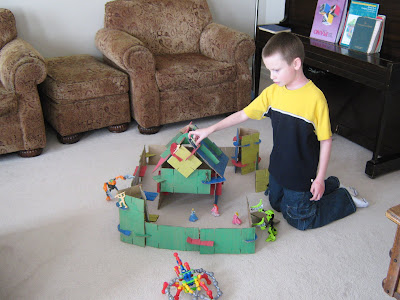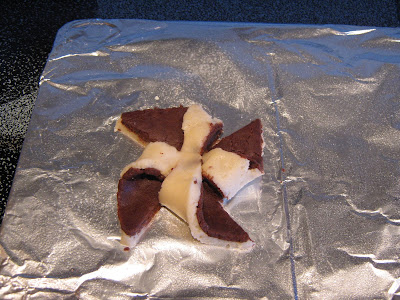 Every year, as St Patrick's Day approaches, I find myself attempting the sugar density rainbow experiment, with the children. You probably know the one - where you take six bowls...
Every year, as St Patrick's Day approaches, I find myself attempting the sugar density rainbow experiment, with the children. You probably know the one - where you take six bowls...
...and add an increasing amount of sugar to each bowl, 1 tablespoon in the first, 2 tablespoons in the second, and so on.

Then, you add food coloring to each bowl, according to the colors of the rainbow...

...send small children a safe distance away...

...and dissolve the sugar, and food coloring, in a cup of boiling water for each bowl.

Finally, you carefully pour a little of the water from each bowl into a glass, or clear mug, starting with the purple, or most dense, and ending with the red, or least dense. Of course, if you've tried this yourself, you know no matter how carefully you pour in the water, it generally all mixes. Leaving you with a very non-rainbowish cup of brown sugar water.
 This year though, I was determined not to be defeated by a children's experiment. Especially since it's one of those experiments you see all over the Internet, and in countless children's science books. Clearly, either everyone is lying, or it is possible to make this experiment work.
This year though, I was determined not to be defeated by a children's experiment. Especially since it's one of those experiments you see all over the Internet, and in countless children's science books. Clearly, either everyone is lying, or it is possible to make this experiment work.So, we just kept trying, and trying, and trying, and finally found a solution.
Instead of starting with the most dense liquid, we started with the least dense. But, first I transferred all the sugar water solutions into taller glasses, so we could use a straw, as an eye dropper, by dipping it into the liquid, and covering one end with a thumb, to transfer it to our test tube (actually it's a cleaned out container from the Gak you can buy at the supermarket - but it looks like a big test tube).

We moved from least dense to most dense, releasing each new layer on the bottom of our test tube, with the straw, instead of trying to pour it onto the top. This method was a little difficult for my youngest, who had a hard time leaving the straw on the bottom of the tube until all the liquid was out of it.

But, the older children managed it with ease. Now maybe, we'll be brave enough to try the ocean currents, liquid layering experiment from All Things Beautiful.

For more fun with science, check out this week's Science Sunday link-up at Adventures in Mommydom.
It's great to be a homeschooler.











































